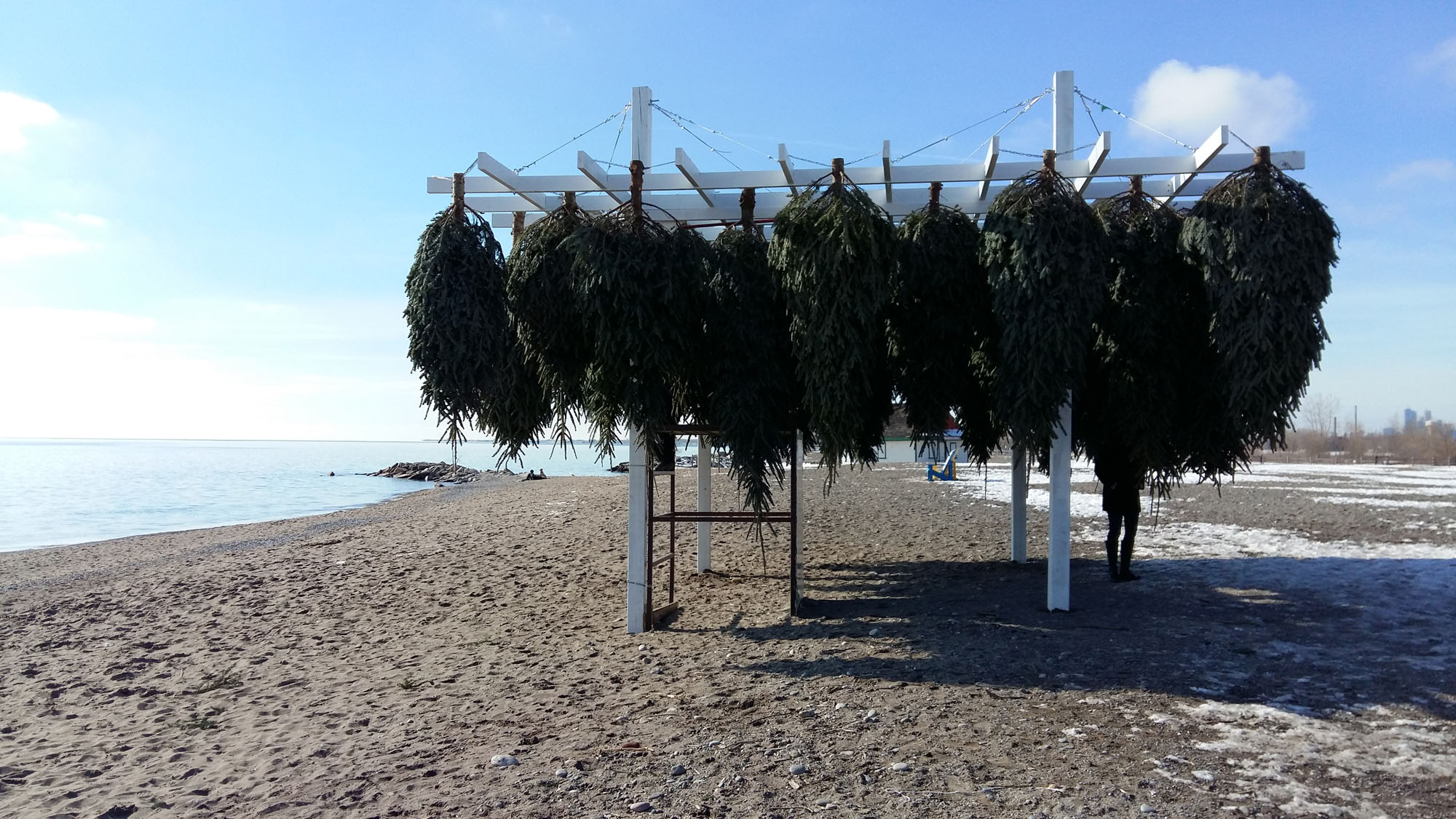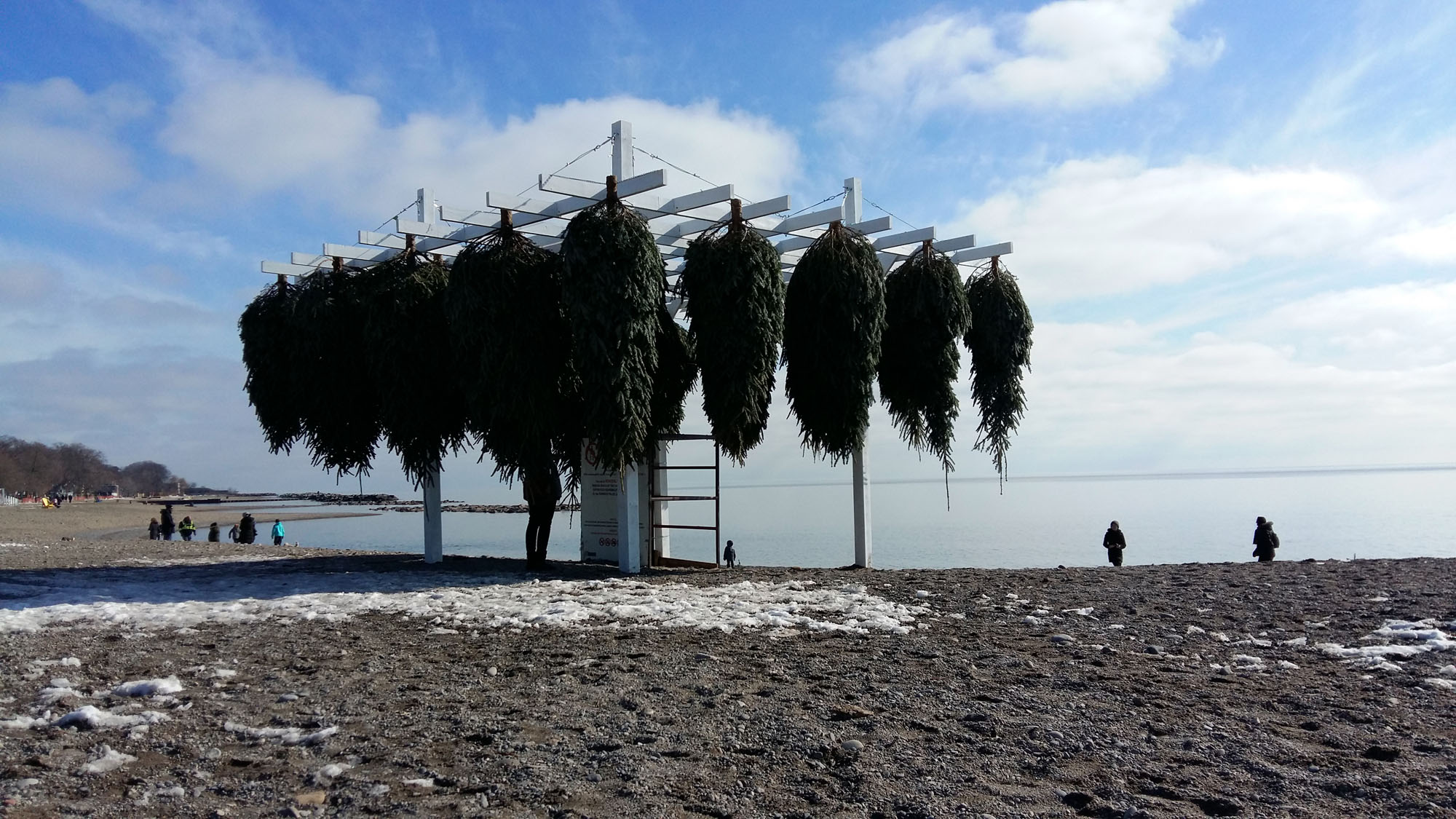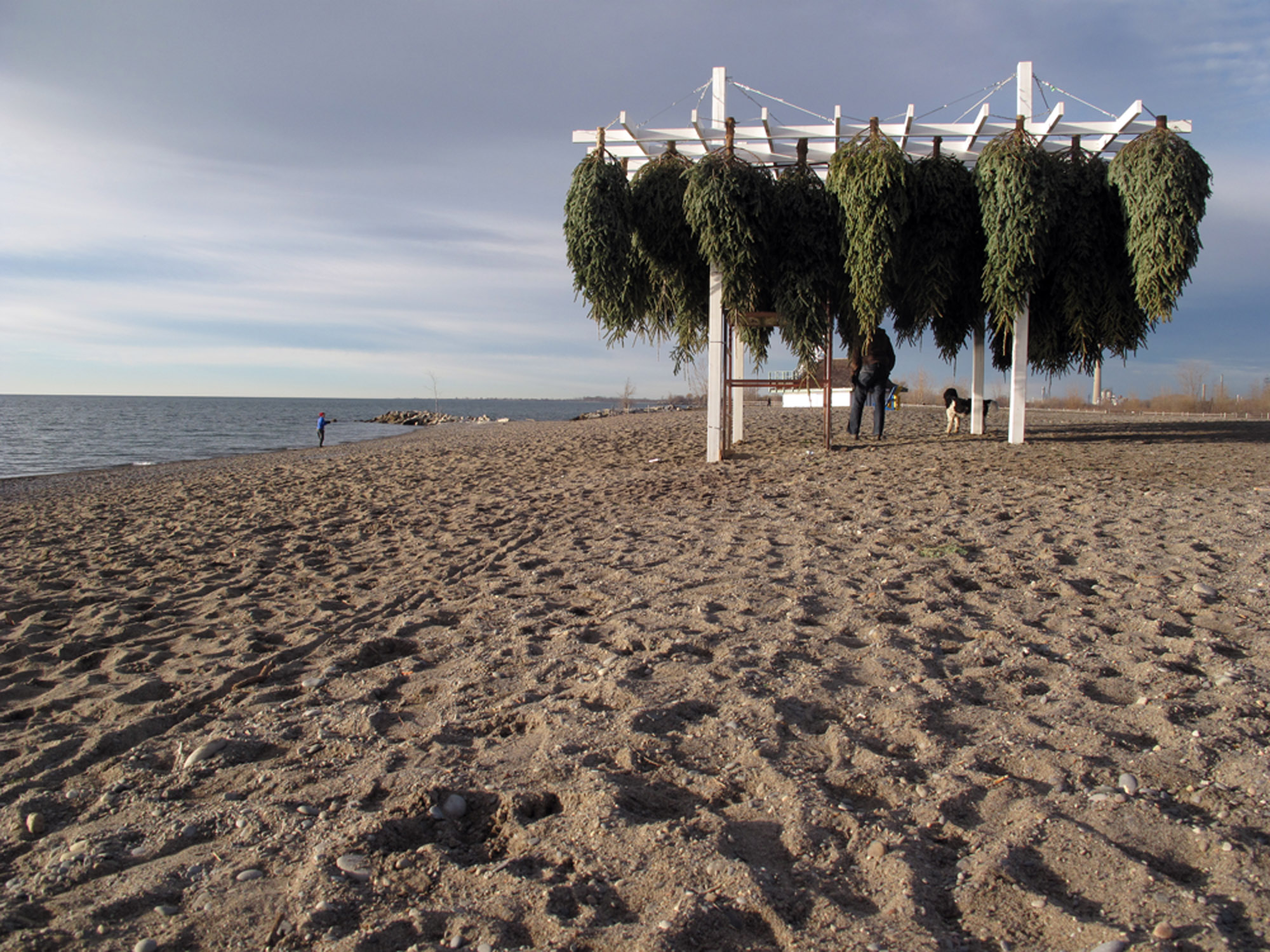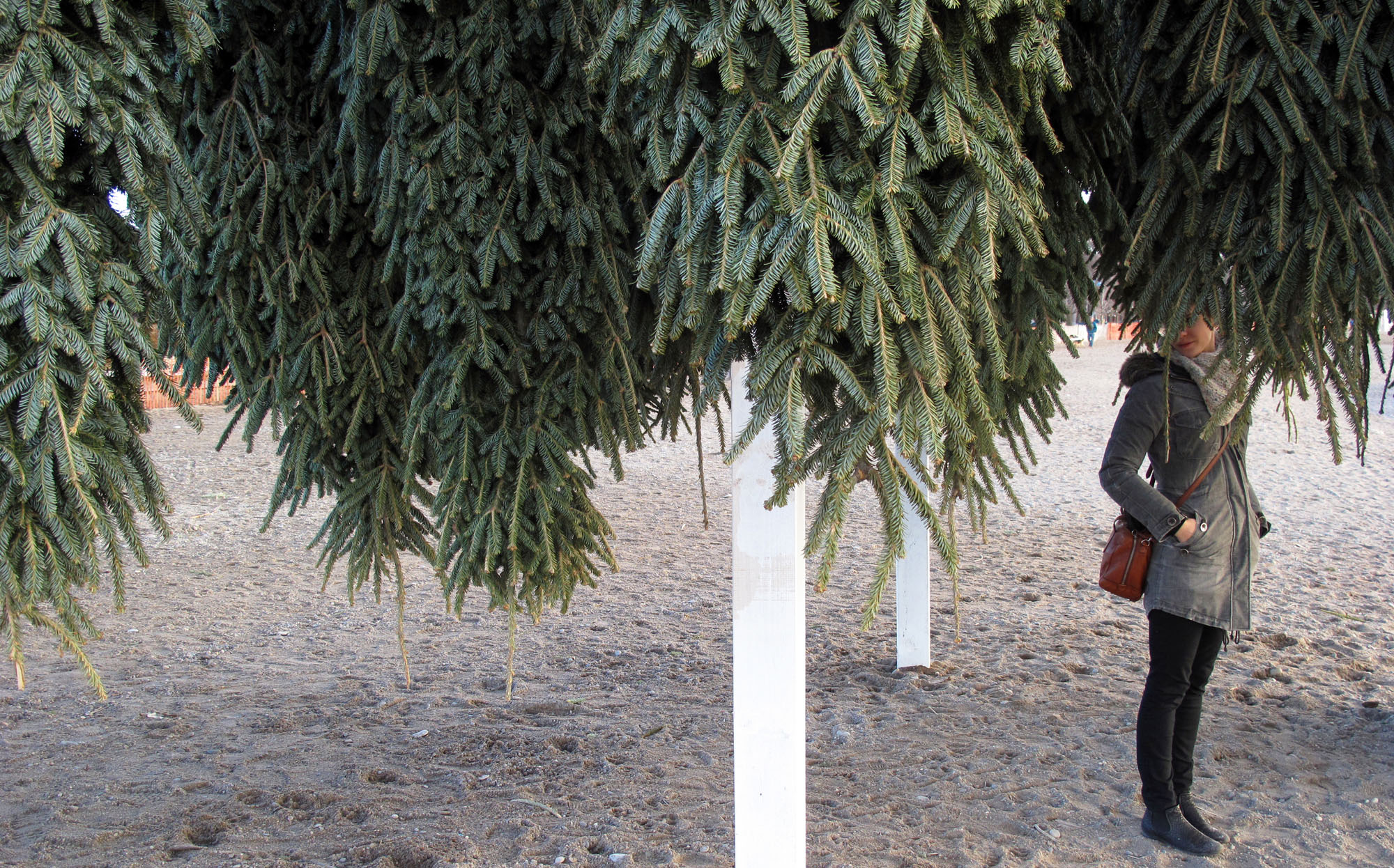North is a direction, an idea, an experience. North as designed by the architects Suresh Perara and Julie Charbonneau of the Montreal firm PER.CH is a triumph.
Using familiar materials, PER.CH turns the idea of north on its head. Literally. Thirty-nine fir trees hang upside down from a metal framework, their soft green triangles pointing down to a bare Toronto beach.

Photo courtesy of Suresh Perara.
North is one of eight installations that make up Winter Stations, an exhibition on the shores of Lake Ontario. Now in its third year, the project challenges designers to use Toronto’s lifeguard stations as the basis for winter art. This year’s theme, Catalyst, asks them to “disassemble and re-shape our notions of Toronto’s waterfront, with particular attention to the sand and materials strewn across the beach…[to be] a catalyst for change.”
North does this, in spades.
When I saw a photo of North in The Globe and Mail, I immediately thought of an inverted map of the world. Instead of an arrow pointing upwards to the north, the arrow formed by the top of the tree was pointing downwards. North flipped to point south? On a closer view, other reversals and tensions became apparent, between the stark setting and the lush growth of the trees, between the soft, dripping branches and the chopped off trunks. Dead carcasses hanging from hooks in a butcher’s shop came to mind, discarded Christmas trees transformed to sides of beef, swaying slightly as the butcher’s fan rotated.

Photo courtesy of Suresh Perara. The ladder of the lifeguard station is clearly visible in this photo.
When I met Perara and Charbonneau at their studio in Montreal late last week, they described the thinking that led to their design: the idea of a northern forest, a quintessentially Canadian landscape, set against the image of an empty, frozen beach that was, at the same time, a place of nostalgia, tinted playfully with childhood memories.
Putting these images together produced a work that speaks to change and alters our perceptions of a familiar landscape.

Photo courtesy of Suresh Perara.
The fir trees they’ve used are re-purposed Christmas trees, two months later still surprisingly green. Other elements are equally surprising. The trees are dead yet they seem alive. As you stand on the beach, they sway gently overhead, mimicking the movement of the water at ground level. As you walk through them, pushing them aside, they rustle gently like a bead curtain. But perceptions really flip when you climb the lifeguard station ladder. Moving through the fairytale forest, you reach a clearing at the top. But instead of seeing out over tree tops, you look out across chopped off trunks. Brutality at one end, fragility at the other.
Suresh and Charbonneau were in Toronto for the opening of Winter Stations. On an unseasonably warm day, the deserted beach they had pictured was full of people. They saw a young girl, 5 or 6 years old, stop and stare. It’s so weird, she said, I love it! They heard a father ask his young son what he thought the installation meant. The boy didn’t answer, or if he did, they didn’t hear.
Neither child was interested in analyzing or assigning meaning to the installation — it isn’t necessary to do that in order to enjoy its surreal quality. And while seeing photos of North makes me smile, the images also raise questions, about the commodification of nature, the brutal disregard we too often have towards our surroundings and the effect our actions have on our environment.

Photo courtesy of Suresh Perara.
PER.CH is founded on the notion that architecture can allow us to experience the everyday world in richer and deeper ways. Art installations like North or Forest SQUARE Sky, a 2009-2010 installation at the International Garden Festival at Métis, Quebec, reinforce this notion. They give the creative team room to experiment and even to fail. For Perara and Charbonneau, part of doing these projects is discovering what will happen. They are interested in the interaction with the public in public spaces. And they wonder, will the canopy of trees provide a gathering spot? Will the space be a catalyst for public debate? Will it provoke changes, in attitudes or behaviour?
Finding the title for the installation gave Perara and Charbonneau the focus necessary to create a project on a very tight budget. For me the title gave entry to a gathering place of ideas. I hope I’m fortunate enough to be in Toronto before March 27 when Winter Stations ends. If I am, I expect that North will once again make me think about what I’m seeing. On the spot I expect it will oblige me to feel what’s going on around me. And that, I believe, is a hallmark of a good work of art.






